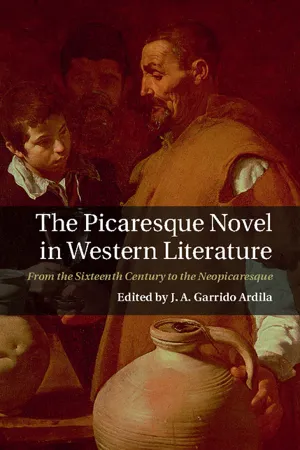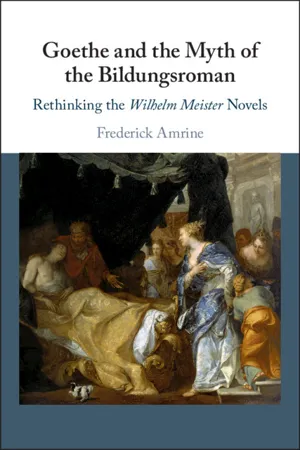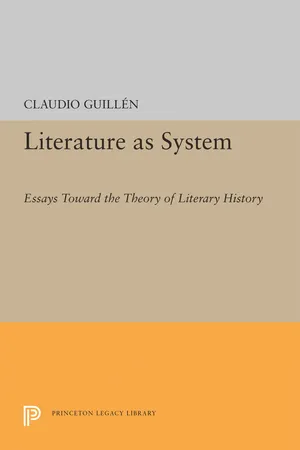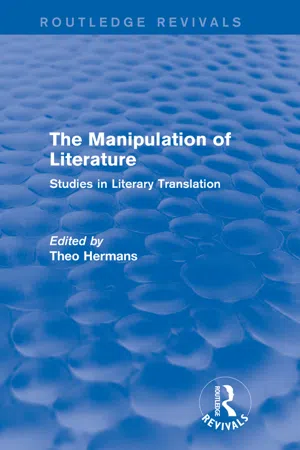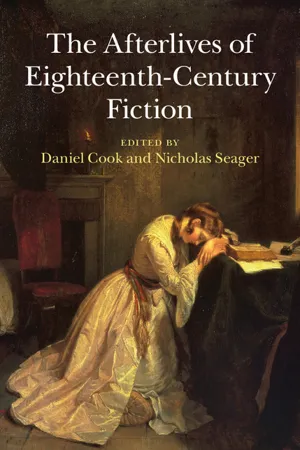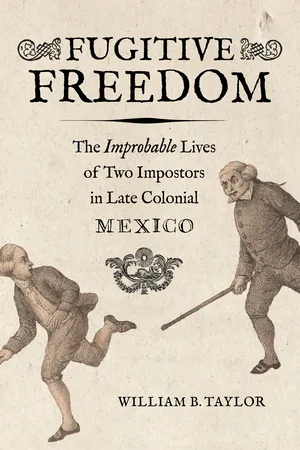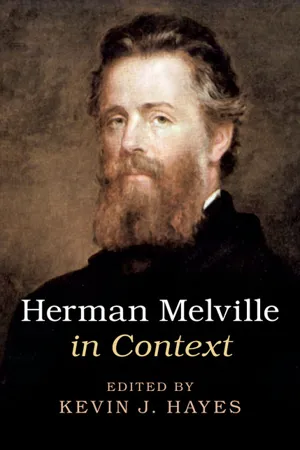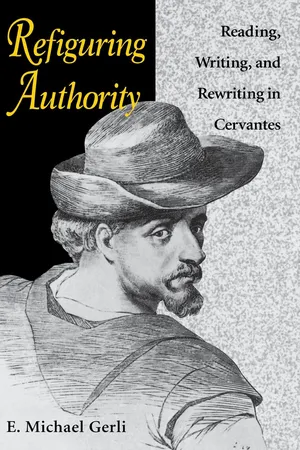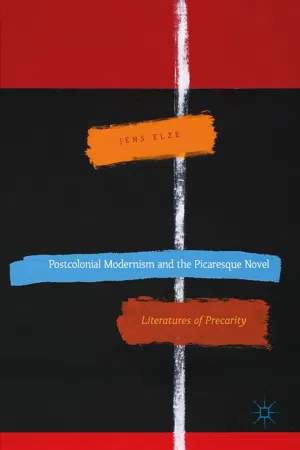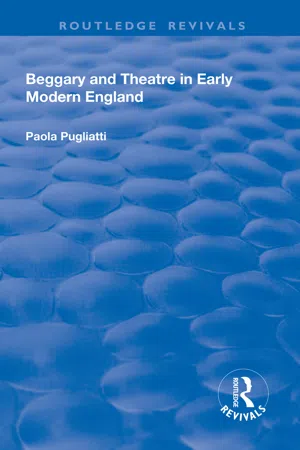Literature
Picaresque Novel
A picaresque novel is a genre of prose fiction that depicts the adventures of a roguish, often lower-class protagonist as they navigate through a series of episodic escapades. The narrative typically unfolds in a first-person, autobiographical style and offers a satirical commentary on society. These novels are characterized by their episodic structure, humor, and focus on the protagonist's survival and cunning.
Written by Perlego with AI-assistance
Related key terms
1 of 5
12 Key excerpts on "Picaresque Novel"
- eBook - ePub
- Peter Melville Logan(Author)
- 2014(Publication Date)
- Wiley-Blackwell(Publisher)
Scholars have built up a normative conception of this genre, according to which the Picaresque Novel consists of a retrospective first-person narrator writing an episodic and open-ended narrative about his or her life as a rogue, one who hails from a low or dishonorable background and travels from place to place in a struggle for survival (see NARRATIVE PERSPECTIVE). The pícaro seeks a secure toehold while living by his or her wits in an exploitative, corrupt, urban world. The Picaresque Novel flourished in late sixteenth- and early seventeenth-century Spain, and was transformed as it spread during the later seventeenth and eighteenth centuries to other European countries, especially England, France, and Germany. Since the nineteenth century, the picaresque is also evident in Russia, the U.S., and Latin America, but by this point it is easier to talk of a picaresque mode manifest in a wide range of novels than it is of the Picaresque Novel as a distinct genre. After its initial emergence, the history of the Picaresque Novel is both one of generic disintegration and of modal consolidation, a complex dynamic addressed below in two parts: (1) Spanish origins and (2) generic transformations. Spanish Origins The Picaresque Novel is generally seen as an early modern innovation, a new cultural form that emerged in Golden Age Spain and which played a significant role in the subsequent development of the novel. However, the genre draws on many antecedents, ranging from such Spanish works as La Lozana andaluza (ca. 1528–30, Lozana, the Lusty Andalusian Woman) by Francisco Delicado, La Celestina (1499) by Fernando de Rojas, and the Libro de buen Amor (1330, Book of Good Love); to medieval buffoon literature, the Arabic genre of the maq ma, and folk materials such as trickster tales; to narratives from antiquity, including Apuleius's The Golden Ass (ca - eBook - PDF
The Picaresque Novel in Western Literature
From the Sixteenth Century to the Neopicaresque
- J. A. Garrido Ardila(Author)
- 2015(Publication Date)
- Cambridge University Press(Publisher)
chapter 1 Origins and definition of the picaresque genre J. A. Garrido Ardila Over the past century, the term picaresque has been fully incorporated into the metalanguage of Western national literatures: Picaresque Novel in English, novela picaresca in Spanish, roman picaresque in French, Schelmen- roman or pikarescher Roman in German, Плутовской роман in Russian, romanzo picaresco in Italian, pikaresk-roman in Danish and Norwegian, and pikareskroman in Swedish. Novels from different periods and from dispar- ate nations have been designated as picaresque, from the anonymous Lazarillo de Tormes (1550–2?) to Mark Twain’s Huckleberry Finn (1884), and from Defoe’s Moll Flanders (1722) to Sokolov’s Palinsandriia (1985). Those many novels labelled picaresque retain some of the quintessential features of the early examples of this sort of text published more than 400 years ago, and bear testimony to their great influence on and contri- bution to the history of Western literatures. In the 1960s and 70s, the picaresque genre enjoyed enhanced esteem among critics who examined the picaresque elements in the works of some of their nations’ greatest writers. These included, for example, Fielding and Dickens in Britain, Twain and Bellow in the United States, Lesage and Voltaire in France, Hans Jakob Grimmelshausen, Mann and Grass in Germany, and Ilf and Petrov in Russia. Nowadays, the label picaresque is, generally speaking, deemed a prestigious one: when applied to any post-seventeenth-century novel it confers upon it a halo of critical appeal and relates it to one of the earliest traditions (perhaps the earliest) in the history of the novel. Yet so thin have some critics spread the term that it has often been loosely applied to novels that are, in the strictest sense, conspicuously non-picaresque, such as Don Quixote and Tom Jones. The term ‘picaresque’ remains one of the most overused and conten- tious in literary criticism for three main reasons. - eBook - PDF
Goethe and the Myth of the Bildungsroman
Rethinking the Wilhelm Meister Novels
- Frederick Amrine(Author)
- 2020(Publication Date)
- Cambridge University Press(Publisher)
In the nineteenth century, the genre virtually disappears, yet 27 The Picaresque Novel despite this near-total break, it revives in the twentieth century to such an extent that it again becomes one of the predominant forms. In order to account for the persistence of picaresque fictions apart from the direct transmission of a continuous historical tradition, critics have begun to speak of the picaresque as a mode; Robert Alter terms this “a broad ahis- torical category … which is applicable to works of literature of all ages.” 13 Thus Claudio Guillén has sought to define “a picaresque myth: an essen- tial situation or significant structure derived from the novels themselves”; 14 Ulrich Wicks follows Robert Scholes (and thus ultimately Frye) in trying to establish “a picaresque mode concept” that “begins beyond and above historical considerations and moves gradually toward the more specific and particular problems of historical context, tradition and so on”; 15 and Stuart Miller has sought to delineate an “ideal genre type” of the pica- resque novel. As a result, picaresque narrative has come to be defined more and more precisely, and novels once included in a vague, catch-all category are now seen as complex integrations of various narrative modalities. At a certain point, surely by the time of Gil Blas, “it begins to be useful to talk, not about the Picaresque Novel, but about the transformations of the Picaresque Novel, or about picaresque elements in other kinds of novels.” 16 Jurij Striedter has described this modulation in the case of Gil Blas with great precision: the first three books remain entirely within the style of the Picaresque Novel, while in the fourth book the “heroic-gallant” ele- ment comes into its own, and from the eighth book onwards the narrative exhibits features characteristic of the memoir. Yet in each case the stylistic modulation is not abrupt, but gradual. - eBook - PDF
Literature as System
Essays Toward the Theory of Literary History
- Claudio Guillen(Author)
- 2015(Publication Date)
- Princeton University Press(Publisher)
3 It belongs to a larger body of poetics, and affects poetry insofar as the actual poem is a dream more or less fulfilled. The dream is generally, if not always, a combination in the memory of the artist of certain already existing prototypes. The Picaresque Novel-to-be begins (for it has a clear begin-ning, and I am not speaking of a metatemporal myth) with an overture in two movements: La vida de Lazarillo de Tormes (1554), the primitive of the form (in the sense that Giotto is a primitive), and the Primera parte de Guzman de Alfarache (1599), which would become a best seller and the main target of imitation for many decades. Yet the latter did not entirely supersede the former, and Quevedo surely re-membered both as he wrote his Historia de la vida del Buscon (1626). One could think of the picaresque genre as an ideal type blending, in varying degrees or fashions, Laza-rillo de Tormes with Guzman de Alfarache (each having its predominant tonality, technique, and goals), with the addi-tion of other novels according to the case. A genre has stable features, but it also changes, as a precise influence on the work in progress, with the writer, the nation, and the period. 3 Cf. Renato Poggioli, Poetics and Metrics, in Comparative Litera-ture. Proceedings of the I.C.L.A. Congress in Chapel Hill, N.C. (Chapel Hill, 1959), 1, 192-204. 78 • Toward a Definition of the Picaresque of individual destinies. In Spanish, the key word is vida, which most often has a place in the titles of picaresque tales: La vida de Lazarillo de Tormes, y de sus jortunas y adversidades. The Picaresque Novel, then, offers a process of conflict between the individual and his environment, inwardness and experience, whereby one element is not to be perceived without the other. This double articulation is fundamental, and its appropri-ateness is confirmed by the memory of two distinct kinds of excess which critics of the picaresque have incurred. - eBook - ePub
The Manipulation of Literature (Routledge Revivals)
Studies in Literary Translation
- Theo Hermans(Author)
- 2014(Publication Date)
- Taylor & Francis(Publisher)
This blueprint will serve as an initial tertium comparationis, underlining both the typical structure of the Picaresque Novel as a story with an open ending, and the cultural and ideological tensions between the picaro and his society. As far as the translations are concerned, my observations relate to the ‘matricial norms’ (Toury 1978:87) of individual versions, taking into account literary as well as socio-cultural factors. The conclusions that can be drawn from this inquiry remain, obviously, limited in scope. Nevertheless, in so far as they are based on various essential ‘textemes’, they offer a clear picture of a common type of translation. By proceeding in this way, that is, treating a particular genre during a particular period, it will be possible to illustrate some aspects of the part played by translations in the spread of a particular genre from one literature to another. The Spanish novela pioaresca is usually defined in terms of a number of formal and thematic characteristics (Van Gorp 1977; Miller 1967; Guillén 1962). As far as the plot is concerned the typical Picaresque Novel presents an episodic story-line, in which events are largely determined by chance: “anything can happen to anyone at any time” (Miller 1967:37). The motifs which steer the plot are mostly of a materialistic nature, although they also touch on the Spanish concept of ‘honour’. They are held together by the central theme of disenchantment and disillusion. As for the relation between the picaro and the world around him: the narrator-protagonist is a lonely figure, a man of poor origin, badly treated even by his social equals, and generally leading a somewhat shady existence. The world he is confronted with is peopled by a series of stereotyped lords and masters and by representatives of all walks of life - eBook - PDF
- Daniel Cook, Nicholas Seager(Authors)
- 2015(Publication Date)
- Cambridge University Press(Publisher)
General interest in the chapbook tales signals the market for crime fiction. While some chapbooks remained popular throughout the eighteenth century, their afterlives became what many modern scholars identify as the novel proper. Abridgements of Seventeenth-Century Picaresque Although the term picaresque, as Chad M. Gasta points out, is often loosely defined and problematically applied, it generally indicates a type of narrative that has an episodic plot and features a single main character 72 (the pícaro). 2 The pícaro is a rogue character – that is, one who commits more or less petty crimes rather than pursuing a grand adventure or ambition. 3 The episodic plot relates to this: many picaresque narratives follow the crimes of the main character with no clear plot arc other than the beginning and end of the pícaro’s life. In the sort of book-length picaresque narratives that were written in the seventeenth century, the form and the content of the work are inextricably connected: the narrative is shaped by the actions of the main character. In the chapbook abridge- ments of two popular picaresque works, Don Quixote and The English Rogue, however, the plot is nearly eliminated to focus on character – redefining the rogue narrative to be an exploration of character develop- ment rather than the rambling life of the criminal. Properly speaking, Don Quixote is not really picaresque since Quixote is not a criminal or pícaro, but it is often discussed as such because of its episodic plot. 4 First translated into English in 1612, Don Quixote was reprinted regularly in its entirety as well as in part, and two new transla- tions appeared in 1700. 5 The length of the full Don Quixote meant that it was an expensive book, only available to readers willing and able to spend considerable money on books. - eBook - ePub
Fugitive Freedom
The Improbable Lives of Two Impostors in Late Colonial Mexico
- William B. Taylor(Author)
- 2021(Publication Date)
- University of California Press(Publisher)
4 And, I might add, is it little more than entertainment, with a cast of fools under observation for humorous purposes? Or is it also a weighty moral tale? Could it be all or most of these things at the same time?Literary scholars are also not of one mind about whether the novels are mainly about poverty or not; whether they mainly express elite fear and abhorrence of marginalized, destitute, idle strangers or render audible the voice of the poor against the rich; whether they are Counter-Reformation tracts, entertainments with little religious content, or Erasmian humanist satires against moral and religious hypocrisy; whether the protagonist is a buffoon or a rebel who rejects society and its rewards, an anarchist or a social climber, an optimist or a pessimist; whether he (or sometimes she) is a hero to a large or small circle of readers, an antihero, or a nonhero.5 The answers depend on suppositions about an author’s intent and the audience, both the readers and the consumers of stories from the novels.While as many as thirty Spanish works written in the sixteenth, seventeenth, and eighteenth centuries have been proposed as Picaresque Novels, only four early ones are widely accepted—La vida de Lazarillo de Tormes y de sus fortunas y adversidades ; La vida del pícaro Guzmán de Alfarache ; La vida del buscón, llamado Don Pablos ; and La vida y hechos de Estebanillo González, hombre de buen humor, compuesta por él mismo . And for several leading scholars, these four are singular works rather than the backbone of a genre, their differences more important than their similarities.6 The most often cited reflection on the problem of defining lo picaresco is an essay by Claudio Guillén, but Guillén does not, in fact, offer a definition. His target, as he puts it, is “a series of literary works, not a definition.” He aims “to delineate as clearly as possible an object of study . . . [that is] flexible enough to allow for alterations in the works over time and different countries.”7 - eBook - ePub
- Harry Sieber(Author)
- 2017(Publication Date)
- Taylor & Francis(Publisher)
3The Picaresque Novel in Europe: a literary itinerary of the pícaroFrank Kearful recently suggested that the ‘Spanish picaresque … is far more validly seen, as a genre, in its own national, historical, formal, thematic, and stylistic contexts than in those of the novel in succeeding centuries in other countries’ (p. 383). I am sympathetic to his proposition but at the same time it would be absurd to deny the wholesale exportation of a cluster of picaresque conventions in the light of the numerous ‘translations’ of Spanish Picaresque Novels into Italian, German, French and English. I set apart the word ‘translations’ because they were not translations in the modern sense. The French version of the Lazarillo, for instance, carried the title L’histoire plaisante et facetieuse du Lazare de Tormes espagnol. En laquelle on peult recongnoistre bonne partie des meurs, vie & conditions des espagnolz (Paris, 1561). Lazarillo’s ‘fortunas y adversidades’ were transformed into an ‘amusing history’, and a ‘joke-book’ in which the French reader would learn about the mores, life and condition of Spaniards in general. David Rowland’s English translation substituted a different subtitle: The Pleasaunt Historie of Lazarillo de Tormes a Spaniarde, wherein is conteined his marveilous deeds and life. With the straunge adventures happened to him in the service of sundrie Masters (London, 1586). Lazarillo’s hard life consists of ‘straunge adventures’, a rather odd way of describing his numerous beatings and near starvation. By the time the Lazarillo found its way to Italy, the length of the title had doubled. Barezzo Barezzi offered the public ‘con vivaci discorsi, e gratiosi trattenimenti’ a wide range of topics: ‘ammaestramenti saggi, avenimenti mirabili, capricci curiosi, facetie singolari, sentenze gravi, fatti egregi, detti piacevoli, & proverbi sententiosi’ (title page of Venice edition, 1622). Italy, with its strong liber vagatorum tradition and vast storehouse of satiric novelle, would have found very little that was new in the ‘unique’ jokes, ‘witty’ teachings, ‘miraculous’ events and ‘weighty’ sententiae. The editor of the Milan, 1587 Spanish edition pointed out that the Lazarillo - eBook - PDF
- Kevin J. Hayes(Author)
- 2018(Publication Date)
- Cambridge University Press(Publisher)
9, 324. 5 J. A. Garrido Ardila, “Origins and Definitions of the Picaresque Genre,” in The Picaresque Novel in Western Literature: From the Sixteenth Century to the Neopicaresque, ed. J. A. Garrido Ardila (New York: Cambridge University Press, 2015), 1–23. 6 Claudio Guillén, Literature as System: Essays Toward the Theory of Literary History (Princeton: Princeton University Press, 1971), 71. 7 Margaret Cohen, The Novel and the Sea (Princeton: Princeton University Press, 2010), 88, 186–890. 8 Kevin J. Hayes, Herman Melville (London: Reaktion, 2017), 67. 9 Writings, vol. ii, p. xiv. 10 Ibid., 77. 11 Ibid., 12. The Picaresque Novel 241 241 12 William Dillingham, “Melville’s Long Ghost and Smollet’s Count Fathom,” American Literature 42 (1970), 232. 13 Writings, vol. ii, 293. 14 Melville’s Reading, no. 480. 15 Herman Melville to Lemuel Shaw, October 6, 1849, and to Richard Bentley, June 5, 1849, Writings, vol. xiv, 138, 132. 16 Writings, vol. iv, 201. 17 Writings, vol. v, 34, 248; Charles Anderson, “A Reply to Herman Melville’s White-Jacket,” American Literature 7 (1935), 129; Robert Giddings, The Tradition of Smollett (London: Methuen, 1967), 163. 18 Writings, vol. v, 46, 51, 227–8. 19 Miguel de Cervantes, Don Quijote: A New Translation, Backgrounds and Contexts, Criticism, trans. Burton Raffel, ed. Diana de Armas Wilson (New York: Norton, 1999), 131. 20 Life of Lazarillo de Tormes, 23; Robert Fiore, Lazarillo de Tormes (Boston: Twayne, 1984), 34. 21 Harry Levin, “Don Quixote and Moby Dick,” in Cervantes across the Centuries, ed. Angel Flores and M. J. Benardete (New York: Dryden Press, 1947), 219; Writings, vol. vi, 212. For a discussion of Don Quixote’s influence on The Confidence-Man, see Tom Quirk, Melville’s Confidence Man: From Knave to Knight (Columbia: University of Missouri Press, 1982), 100–1, and Daniel Hoffman, Form and Fable in American Fiction (New York: Oxford University Press, 1961), 286–7; and, of course, Stanley T. - eBook - PDF
Refiguring Authority
Reading, Writing, and Rewriting in Cervantes
- E. Michael Gerli(Author)
- 2014(Publication Date)
- The University Press of Kentucky(Publisher)
2 Shortly after the appearance of Mateo Aleutian's Guzman de Alfarache (1599), it is easy to discover the introduction of picaresque themes and concerns in Cervantes' works. In Don Quijote alone, for example, we are confronted with numerous characters and episodes attesting to his awareness of the narrative and ideological conventions of Picaresque Novels. 3 It is to the Novelas ejemplares, however, that one must turn in order to appreciate fully the repercussions of the picaresque upon Cervantes' writing. It is commonly recognized that three of the novellas, La ilustre fregona (The Illustrious Kitchen Maid), Rinconete y Cortadillo (Riconete and Cortadillo), and El coloquio de los perros (The Dogs' Colloquy), inscribe picaresque motifs as they subject them to critical scrutiny and reconfiguration. In fact, according to Blanco Agui-naga, the last two novellas constitute deliberate rejections of the form (1957, 328-29, 340-41), while all three are interpreted by Dunn (1993, 205) as daring deconstructions and transformations of the picaresque that at once memorialize and alter the canon as it had been defined by Lazarillo de Tormes (1554) and Guzman de Alfarache. Cervantes possessed an acute appreciation of the problematics of form and literary convention and grappled with them always as he wrote. In fact, as he tells us, the immediate impulse to write Don Quijote was 12 Refiguring Authority driven by his desire to counter what he felt were the failings of the novels of chivalry. In his prologue to that work he decisively announces that his objective is to deshacer la autoridad y cabida que en el mundo y en el vulgo tienen los libros de caballerias (25) (diminsh the authority and acceptance that books of chivalry have in the world (9)). - eBook - PDF
Postcolonial Modernism and the Picaresque Novel
Literatures of Precarity
- Jens Elze(Author)
- 2017(Publication Date)
- Palgrave Macmillan(Publisher)
33 picaresque, adj. 2. Of a lifestyle, etc.: wandering, drifting; transitory, impermanent. precarious, adj. 2.c. Subject to or fraught with physical danger or insecurity; at risk of falling, collapse, or similar accident; unsound, unsafe INTRODUCTION At a critical juncture in his adolescence, young Wilhelm Meister, hero of Johann Wolfgang Goethe’s seminal novel of formation Wilhelm Meisters Lehrjahre (1796) receives the following advice on how to actively lead a life truly worth living. It is a piece of advice that is mainly concerned with the relation between human will and rationality to necessity and fortune: The web of life is woven of necessity and chance. Man’s reason stands between them and governs both, treating necessity as the foundation of its being and at the same time guiding the operation of chance to its own advantage, for man only deserves to be called a god of this earth, as long as in the exercise of reason he stands firm and immovable. Woe then to him who has been accustomed from youth to confound necessity with arbitrary will, and to ascribe to chance a sort of reason, which it seems a kind of reli- gious duty to obey! What is this but to renounce our own judgment and to allow unopposed sway to our inclinations. We deceive ourselves with the CHAPTER 2 Biography © The Author(s) 2017 J. Elze, Postcolonial Modernism and the Picaresque Novel, https://doi.org/10.1007/978-3-319-51938-8_2 34 J. ELZE belief that this is an act of piety to pursue our course without reflection, to submit to the guidance of agreeable accidents, and finally to dignify the result of such a fluctuating life with the appellation of heavenly guidance. - eBook - ePub
- Paola Pugliatti(Author)
- 2017(Publication Date)
- Routledge(Publisher)
There is an even sharper division between peasant bandits and the criminal underworld of urban or vagrant elements, which existed in the interstices of rural society but clearly did not belong to it. In traditional societies criminals are almost by definition outsiders, who form their own separate society, if not an antisociety of the 'bent' which mirrors that of the 'straight". They normally speak their own special language .... Their associations are with other outcast occupations or communities, like the gypsies, who supplied so much of the argot of the French and Spanish underworld, the Jews who provided even more vocabulary to the German .... They are non-conformists in practice and by ideology; on the devil's side rather than God's, or if religious, then on the side of heresy against orthodoxy.(Hobsbawm, 2000 [1969], pp. 42-3)Another generally - although uncritically - accepted view is that both the rogue pamphlets and the conny-catching pamphlets are connected with the Picaresque Novel. The connection is invariably taken for granted, thus implying that all these texts belong to the same tradition; and, although the direction and times in which the exchange may have taken place are never specified, the classification of all underworld literature under the label of 'picaresque' seems to assign to the Spanish novels the role of prototype. It is true that all these texts deal with the world of petty crime and that there are elements which transmigrated from one subgenre to the other; but while certain themes and motives coincide, the genre conventions are entirely different. Besides, as the dates of publication show, if there was a borrowing this was performed by the Picaresque Novel and not the contrary. If we consider the Italian and German pamphlets, there is no doubt that the rogue narratives were the first specimens of that specific form of underworld literature produced in Europe; but also the more distinctly English tradition of the conny-catching pamphlets preceded the first Spanish Picaresque Novel. Gilbert Walker's A Manifest Detection was in fact published in 1552, while the anonymous Lazarillo de Tonnes was published in 1554; the second wave of conny-catching pamphlets, in which there are substantial borrowings from Walker's text, belongs to the early 1590s, while Mateo Alemán's Guzmán de Alfarache appeared only in 1599. In this novel, apart from the fact that the obvious model was constituted by Lazarillo de Tonnes, there certainly are borrowings from the rogue pamphlets and contents probably derived from a previously established tradition of mainly religious texts in which the disguises of false beggars are dealt with.4 On the contrary no connection - either in content or in the formal organization of the text - can be established with the conny-catchers' tradition. Finally, Cervantes's Novelas ejemplares
Index pages curate the most relevant extracts from our library of academic textbooks. They’ve been created using an in-house natural language model (NLM), each adding context and meaning to key research topics.

